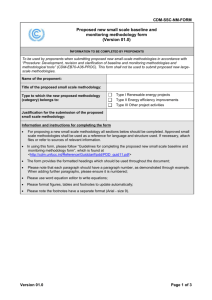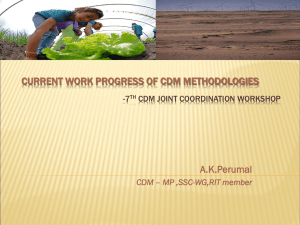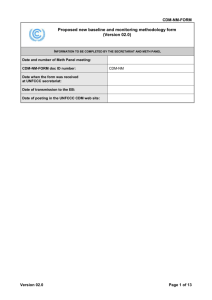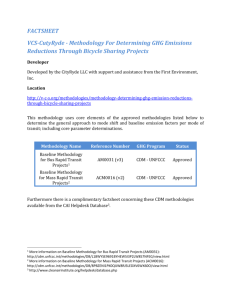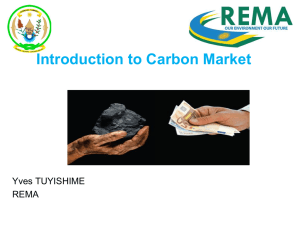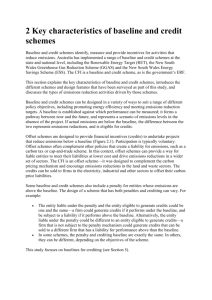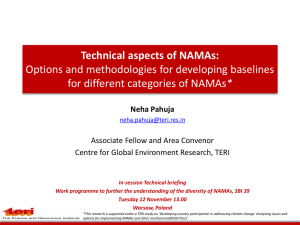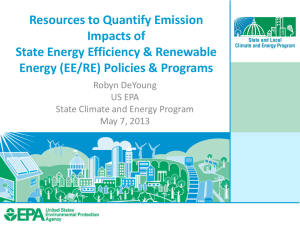Mobilizing carbon finance for sustainable urban - CDM
advertisement
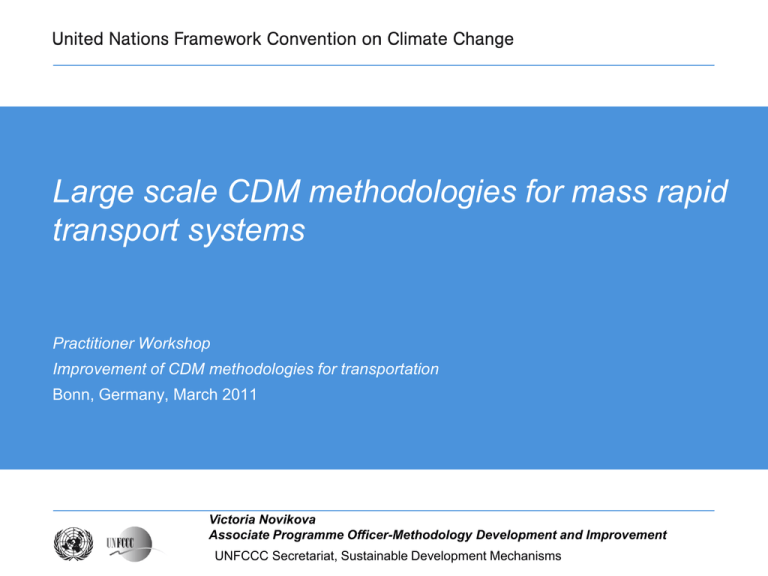
Large scale CDM methodologies for mass rapid transport systems Practitioner Workshop Improvement of CDM methodologies for transportation Bonn, Germany, March 2011 Victoria Novikova Associate Programme Officer-Methodology Development and Improvement UNFCCC Secretariat, Sustainable Development Mechanisms Outline Overview of large scale methodologies for transportation under CDM AM0031: determination of baseline, project & leakage emissions ACM0016: determination of baseline, project & leakage emissions Applicability of AM0031 & ACM0016 Methodology application Key challenges of CDM transport projects Overview of large scale methodologies for transportation AM0031 Baseline methodology for bus rapid transit projects AM0031 Baseline methodology for bus rapid transit projects AM0031: determination of baseline emissions AM0031: project emissions Only from the new transport system: • Option 1. fuel consumption data • Option 2. specific fuel consumption & distance data AM0031: leakage emissions Emissions included as leakage Congestion change provoked by project resulting in (inter alia): • Increased vehicle speed • Rebound effect • Upstream emissions of gaseous fuels in case more gaseous fuels are used by the project case compared to the baseline case Change of baseline factors monitored during project and included as leakage: • Change of load factors of taxis provoked indirectly by project • Change of load factor of remaining conventional buses provoked indirectly by project ACM0016 Baseline methodology for mass rapid transit projects ACM0016 Baseline methodology for mass rapid transit projects ACM0016: determination of baseline emissions ACM0016: project emissions ACM0016: leakage emissions – Changes in the load factor of taxes & busses ; – Reduced congestion on affected roads (provoking higher average speeds, determined for passenger cars & taxis) – Induced traffic (for passenger cars & taxis) and rebound effect Applicability AM0031 ACM0016 Construction & operation of Construction & operation of BRTS (feeder + trunk routes) MRTS or BRTS (trunk routes) Methodology application Projects AM0031 ACM0016 Under validation 5 2 At registration 2 2 Registered 2 0 Registered emissions 464,630 0 Request for issuance 4 0 Issued 1 0 Total Issued CERs (tonnes) 277,044 0 Key challenges of CDM transport projects • Baseline emissions determination – many dispersed emission sources – methodologies require surveys – indirect effects can be significant (e.g. positive and negative rebound effects) • Additionality demonstration – Investment analysis is more difficult in case of public investors (e.g. consideration of subsidies) Thank you for your attention! Supplementary slides Methodology improvement: objectivity, applicability, and usability of methodologies • Readability and language • Internal consistency and consistency with other methodologies • Referencing tools • Use of conservative default values or discount factors to calculate emissions • Omitting insignificant emission sources • Relaxing applicability conditions (e.g. by making conservative assumptions for the calculation of emission reductions for the relevant project types) • Simplifying or replacing with conservative default values certain monitoring requirements
